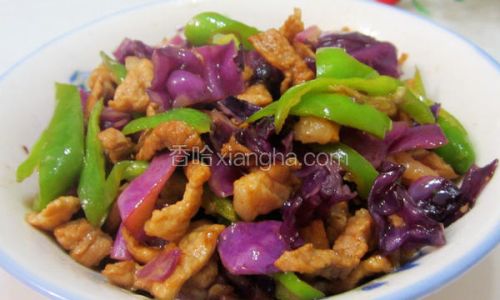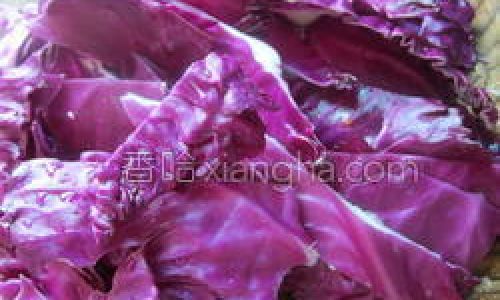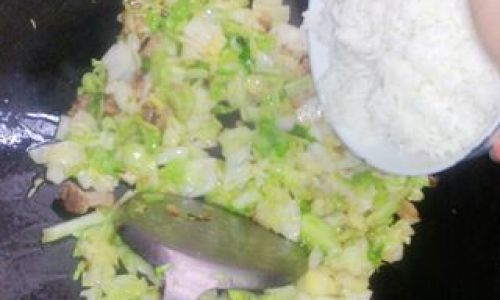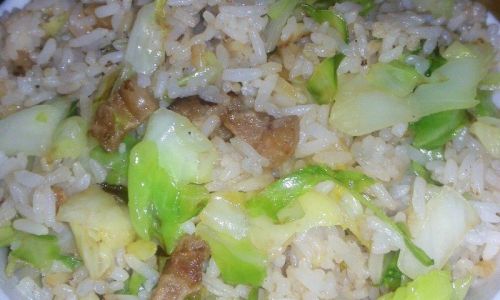Introduction
Stir-frying, a cornerstone of Asian cuisine, transforms simple ingredients into vibrant, aromatic dishes. Among the many vegetables that shine in this cooking method, purple cabbage stands out with its jewel-toned hues and crisp texture. Often overlooked in Western kitchens, this member of the Brassica family offers a mild, slightly peppery flavor that pairs beautifully with bold seasonings. In this comprehensive guide, we’ll explore the nuances of creating a perfect stir-fried purple cabbage dish—a balance of texture, flavor, and nutrition. Whether you’re a seasoned home cook or a novice in the kitchen, this recipe will equip you with the techniques to elevate this humble vegetable into a star attraction.
The Allure of Purple Cabbage
Before diving into the cooking process, it’s worth appreciating why purple cabbage deserves a spot in your culinary repertoire. Unlike its green counterpart, purple cabbage boasts anthocyanins, antioxidants responsible for its vivid color, which also contribute to potential health benefits like reducing inflammation and supporting heart health. Its sturdy leaves hold up well under high heat, making it ideal for stir-fries, where retaining crunch is paramount. Additionally, its earthy sweetness becomes more pronounced when cooked, creating a delightful contrast with savory or tangy seasonings.
Ingredients: Building Flavor Layers
The beauty of stir-fried purple cabbage lies in its adaptability. While the core ingredients remain consistent, you can tailor the dish to your taste by adjusting aromatics, spices, and proteins. Below is a foundational recipe for four servings, with notes on customization.

For the Base:
- 1 medium purple cabbage (approximately 1.5 pounds)
- 2 tablespoons neutral oil (e.g., vegetable, canola, or peanut)
- 3 garlic cloves, minced
- 1-inch piece of fresh ginger, grated
- 1 small onion or 3 shallots, thinly sliced
- 1 red bell pepper, julienned (optional)
- 1 carrot, matchsticked (optional)
For the Sauce:
- 2 tablespoons soy sauce (or tamari for gluten-free)
- 1 tablespoon rice vinegar (or apple cider vinegar)
- 1 teaspoon sesame oil
- 1/2 teaspoon sugar (optional, to balance acidity)
- 1/4 teaspoon red pepper flakes (adjust to taste)
Optional Add-Ins:
- 1/2 cup edamame, tofu, or cooked shrimp
- 1 tablespoon oyster sauce (for depth)
- 1 teaspoon fish sauce (for umami)
- Fresh herbs (cilantro, basil) or toasted sesame seeds for garnish
Preparation: The Key to Crisp-Tender Perfection
Stir-frying is a rapid cooking method, so prepping ingredients in advance is non-negotiable. A well-organized workspace ensures nothing burns while you’re chopping mid-cook.
-
Prepping the Cabbage:
- Remove any wilted outer leaves.
- Quarter the cabbage, then slice out the tough core from each wedge.
- Shred the cabbage into thin, even strips (about 1/4-inch wide). Uniformity ensures even cooking.
-
Aromatics and Vegetables:
- Mince garlic and ginger finely to release their flavors quickly.
- Slice onions or shallots into thin rings; julienne bell peppers and carrots into matchsticks for visual appeal.
-
Sauce Assembly:
Whisk soy sauce, vinegar, sesame oil, sugar, and red pepper flakes in a small bowl. Taste and adjust—add a pinch of salt if needed, though soy sauce often provides enough seasoning.
The Cooking Process: Mastering High Heat
Stir-frying demands precision. The goal is to cook vegetables rapidly over high heat, preserving their color, crunch, and nutrients. Here’s a step-by-step breakdown:
-
Heating the Wok or Skillet:
- Use a carbon-steel wok or a large, heavy-bottomed skillet. These distribute heat evenly and withstand high temperatures.
- Place the pan over high heat for 2-3 minutes until a drop of water evaporates instantly.
-
Adding Oil:
Swirl in the oil to coat the pan. Neutral oils with high smoke points (like peanut) are ideal, as they won’t burn at high temps.
-
Sautéing Aromatics:
Toss in garlic, ginger, and onions. Stir constantly for 30 seconds until fragrant but not browned—burnt garlic imparts bitterness.
-
Introducing Vegetables:
Add carrots and bell peppers first (if using), stirring for 1 minute. Their density requires slightly longer cooking.
-
Cabbage Enters the Stage:

Dump the shredded cabbage into the pan. Use tongs or a spatula to toss vigorously, ensuring every strand is coated in oil.
-
Maintaining High Heat:
Resist the urge to lower the flame. The sizzling sound indicates proper heat; if it subsides, increase the temperature.
-
Deglazing with Sauce:
After 2-3 minutes, when the cabbage begins to wilt but still retains its vibrant color, pour in the sauce. Toss to combine. The liquid will evaporate quickly, leaving the vegetables glazed.
-
Final Touches:
- Fold in proteins like edamame or tofu during the last minute of cooking.
- Drizzle with sesame oil just before removing from heat for a nutty finish.
Achieving the Ideal Texture
The hallmark of a great stir-fry is crisp-tender vegetables. Overcooking mutes flavor and turns cabbage mushy. Test doneness by tasting a strand—it should yield slightly to bite but retain a subtle crunch. If using a timer, aim for 4-5 minutes total cooking time after adding the cabbage.
Troubleshooting Common Pitfalls
- Soggy Cabbage: Excess moisture is the enemy. Pat cabbage dry after washing, and avoid covering the pan during cooking.
- Uneven Cooking: Overcrowding the pan lowers the temperature, leading to steaming instead of searing. Cook in batches if necessary.
- Bland Flavor: Stir-fries rely on bold seasonings. Don’t skimp on garlic, ginger, or soy sauce. Taste and adjust at the end.
Variations to Explore
- Spicy Sichuan-Style: Add Sichuan peppercorns and dried chilies with the aromatics. Finish with a splash of black vinegar.
- Coconut-Lime Twist: Replace soy sauce with coconut aminos. Squeeze lime juice and sprinkle cilantro before serving.
- Protein-Packed: Toss in cubed tempeh or sliced chicken during the final minutes of cooking.
- Nutty Crunch: Garnish with toasted cashews or peanuts for added texture.
Health Benefits: More Than Just a Pretty Dish
Beyond its visual appeal, stir-fried purple cabbage is a nutritional powerhouse. A single serving provides:
- Vitamin C: Boosts immunity and skin health.
- Fiber: Aids digestion and promotes satiety.
- Vitamin K: Essential for bone health and blood clotting.
- Antioxidants: Combat oxidative stress and may reduce chronic disease risk.
Moreover, stir-frying requires minimal oil compared to deep-frying, making it a heart-healthy cooking method.
Serving Suggestions: Beyond the Side Dish
While stir-fried purple cabbage shines as a standalone side, its versatility extends further:
- Bowl Base: Pile over quinoa or brown rice. Top with a fried egg for a complete meal.
- Wrap Filling: Use in lettuce cups with hoisin sauce and crushed peanuts.
- Spring Roll Stuffing: Combine with vermicelli noodles and shrimp for fresh rolls.
- Cold Salad: Toss with a sesame-lime dressing and serve chilled.
Pairing Partners
The dish’s savory-umami profile pairs well with:
- Grains: Jasmine rice, forbidden black rice, or cauliflower rice.
- Proteins: Grilled salmon, teriyaki tofu, or spicy chicken thighs.
- Beverages: A crisp lager, green tea, or a light Riesling.
Leftovers: Reinventing the Next Day
Stir-fries often taste better the next day as flavors meld. Store in an airtight container for up to three days. Reheat gently in a skillet to maintain texture, or repurpose into:
- Fried Rice: Mix with cold cooked rice and scrambled eggs.
- Soup: Add to miso broth with mushrooms and tofu.
- Quesadillas: Sandwich between tortillas with cheese and grill.
Conclusion: The Joy of Stir-Frying
Stir-fried purple cabbage is more than a recipe—it’s a lesson in balance. The interplay of heat, seasoning, and texture transforms a simple vegetable into a dish that’s both nourishing and deeply satisfying. As you master this recipe, experiment with ingredients, spices, and techniques. Each iteration is an opportunity to refine your palate and celebrate the art of cooking. Whether you’re chasing weeknight efficiency or culinary creativity, this dish invites you to savor the journey from prep to plate. So grab your wok, crank up the heat, and let the vibrant world of stir-frying unfold in your kitchen.





0 comments